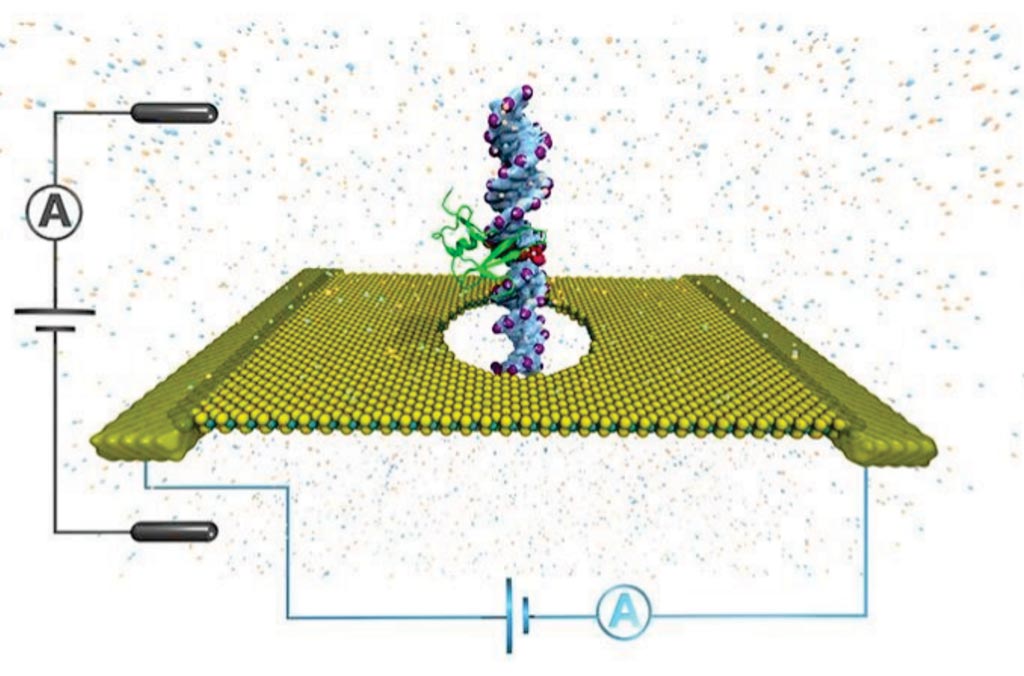Detecting Cancer as DNA Changes Could Enhance Diagnosis
By LabMedica International staff writers
Posted on 26 Apr 2017
DNA methylation is an epigenetic modification involving the addition of a methyl group to DNA, which is heavily involved in gene expression and regulation, thereby critical to the progression of diseases such as cancer.Posted on 26 Apr 2017
A method has been developed to detect, count and map tiny additions to DNA called methylations, which can be a warning sign of cancer, with unprecedented resolution. The method detects and maps DNA methylation by threading the DNA through a tiny hole in a thin sheet of conductive material with a current running through it.

Image: A diagram of the method developed to detect and map DNA methylation, which can be a sign of cancer, by threading the DNA through a tiny hole in a thin sheet of conductive material with a current running through it (Photo courtesy of Aditya Sarathy, University of Illinois).
Scientists at the University of Illinois at Urbana-Champaign developed a method for the detection and localization of DNA methylation that can be achieved with nanopore sensors made of two-dimensional materials such as graphene and molybdenum di-sulfide. They labelled each DNA methylation site with a methyl-CpG binding domain protein (MBD1), and combine molecular dynamics simulations with electronic transport calculations to investigate the translocation of the methylated DNA–MBD1 complex through two-dimensional material nanopores under external voltage biases.
The passage of the MBD1-labeled methylation site through the pore is identified by dips in the current blockade induced by the DNA strand, as well as by peaks in the transverse electronic sheet current across the two-dimensional layer. The position of the methylation sites can be clearly recognized by the relative positions of the dips in the recorded ionic current blockade with an estimated error ranging from 0 to 16%.
The team was able to define the spatial resolution of the two-dimensional material nanopore device as the minimal distance between two methylation sites identified within a single measurement, which are 15 base pairs by ionic current recognition, but as low as 10 base pairs by transverse electronic conductance detection, indicating better resolution with this latter technique.
Jean-Pierre Leburton, PhD, a professor and lead investigator, said, “DNA methylation is actually a starting process for cancer. So we want to detect how many of them there are and how close together they are. That can tell us at which stage the cancer is. Our simulations indicate that measuring the current through the membrane instead of just the solution around it is much more precise. If you have two methylations close together, even only 10 base pairs away, you continue to see two dips and no overlapping. We also can map where they are on the strand, so we can see how many there are and where they are.” The study was published on April 11, 2017, in the inaugural issue of the journal npj 2D Materials and Applications.













